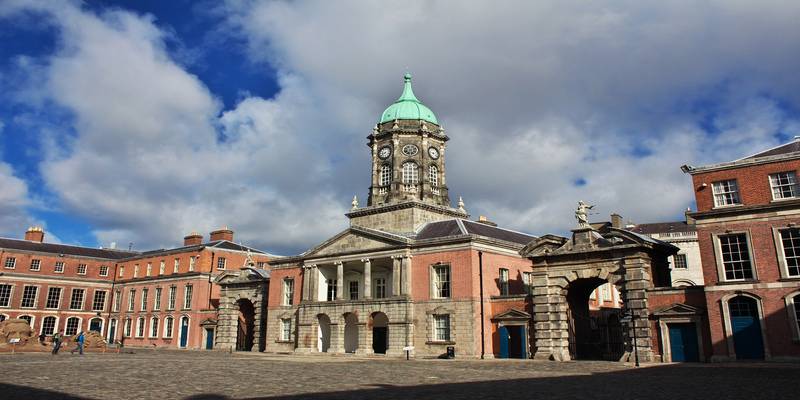A tale of two economies – Hong Kong and China

To say that Hong Kong has a complex and layered relationship with China is an understatement. Since being incorporated into the Qin dynasty more than 2,000 years ago, the connection between the Asian superpower and this tiny cluster of islands has seen its share of ups and downs. As a result of China’s embarrassing loss in the First Opium War, The Treaty of Nanjing of 1842 oversaw the cession of Hong Kong to the British Empire for 99 years. Besides a brief spell of Japanese occupation during the Second World War, Hong Kong remained a British crown colony until the 1997 handover to China.
Since then, Hong Kong and China’s economies have meshed and integrated, both playing an important role in each other’s expansive growth. The recent protests that gripped Hong Kong throughout 2019 strained the relationship between these two entities like never before. It also brought forward an essential question — what lies in store for the economic future of China and Hong Kong, as they look to carve a space in the 21st century?
Before forecasting the future, we need to know how these two economies helped each other prosper in the last few decades. Led by Deng Xiao-ping, the year 1978 marked the turning point for the Chinese economy, which opened its doors to the world after years of isolation. Hong Kong’s status was also boosted as the SAR became China’s main provider of commercial and financial services, as well as a portal for foreign investment. During this time, Hong Kong firms began to take advantage of China’s cheap labour by moving its labour-intensive activities there. Hong Kong’s economic make-up was transferred from manufacturing to services almost instantaneously.
From 1981 to 2000, employment in the service sector saw a meteoric rise from 52% to 80%. Through its stock exchange listings, Hong Kong helped 1,115 mainland companies raise a combined HK$ 6.1 trillion in capital, over the last 30 years. Today, one of every two companies listed on the Hong Kong exchange is mainlandlinked, amounting to 67.3% of capitalisation and 79% of turnover.
Currently, Hong Kong only accounts for 2.7% of the Chinese economy, compared to 18.4% in 1997. The rise of Shanghai and Shenzhen has also decreased China’s dependence on Hong Kong. Despite all of this, Hong Kong remains vital to China. Hong Kong’s special status allows it to negotiate trade and investment agreements independent from Beijing. One effect of this is that Hong Kong does not have to pay tariffs that the United States is imposing on Chinese imports. With the trade war showing no signs of slowing down between the world’s two largest economies, Hong Kong’s status may prove to be an important leverage for China. Since the relationship’s mutual benefits were economical, it makes sense to assume that any hope of a resolution in the future between the two parties needs to be on an economic playing field. One mutual avenue that may mend the relationship between China and Hong Kong is the Guangdong-Hong Kong-Macau Greater Bay Area project.
The Greater Bay Area is a city cluster that includes Hong Kong, Macau and the nine municipalities of Guangdong. The project intends to connect over 71 million people with a combined GDP of more than US$ 1.6 trillion into a technology and innovation hub, and is planned to be a major artery in China’s Belt and Road Initiative. Built around the comparative strengths of the four core cities of Hong Kong, Macau, Guangzhou and Shenzhen, this project is a great chance for Hong Kong to emerge in a leadership role in the region and cement its position as an economic force to be reckoned with.
How will all of this benefit Hong Kong?
A major issue that will be tackled with the completion of the project is that of high property prices in Hong Kong. The influx of staff requiring homes to buy and rent is going to increase the demand in Hong Kong and is expected to underpin the market for years to come. After the high-speed rail link is fully operational, it will increase the potential living space for Hongkongers as living in Shenzhen would be a possibility with the commute being just 30 minutes. Hong Kong residents will be treated as locals when purchasing property, without the need to provide any proof of residence, study or employment as it is required currently. This project will provide a solution to land shortage and soaring property prices.
Mainland higher education institutions will be required to accord equal treatment to Hongkongers. Students will have more options for their tertiary education, with world-class choices such as Tsinghua University and Peking University becoming more easily available. Hong Kong residents wishing to work in the mainland will no longer need to apply for employment permits. As the other cities in the area will be easily accessible with the transportation upgrades, it will give Hongkongers a wider range of job opportunities without needing to move out. This is indeed a great addition to Hong Kong’s workforce.
The project will help in diversifying Hong Kong’s economic structure. With the influx of talent and a bigger market in reach, pushed onward through competitiveness, Hong Kong can secure its long-term prosperity and ensure that future generations are born into a more economically viable and competent societal structure. Hong Kong’s current strengths will be exemplified when it is part of a larger structure. It will help in cementing Hong Kong’s status as an international financial centre, a global offshore Renminbi business hub, and as a centre for both international asset and risk management. There is an established system of globally benchmarked services such as banking, financing, investment, and asset and wealth management in place already which will be a boost to the project.
The fact that Hong Kong offers extensive business services coupled with a robust Innovation and Technology sector, gives it an edge. There is an abundance of expertise in accountancy, project and risk management, logistics, supply chain management and maritime services. Its tertiary institutions, research achievements, intellectual property protection, financial infrastructure and business environment is world renowned. All these advantages mentioned combined with several other points of control will allow Hong Kong to quickly become the centre of the Greater Bay Area, and its most important component.
There may be tough competition from Shenzhen and Guangzhou but Hong Kong has a well-rounded economic composition and an experienced and diverse workforce that gives it an edge. The Greater Bay Area project has been announced at a very important moment. To go from being a crown colony of Britain to China’s SAR, is a unique transformation for Hong Kong. What comes afterwards is a bit unclear. But what is certain is that both China and Hong Kong need each other in the long run, and it is this mutual need that will shape Hong Kong’s future.
Timeline of Hong Kong-China Economic Involvement
1842: Treaty of Nanjing signed. Hong Kong becomes a British colony
1950s: Hong Kong economy transforms
1960s: Amid China’s Cultural Revolution, Hong Kong’s textile industry gets a boost
1978: China opens up to the world; Hong Kong becomes a tourism hub
1984: Sino-British Joint Declaration
1990: Hong Kong Basic Law established
1997: Handover of Hong Kong to China (SAR)
2013: Xi Jinping announces Belt and Road Initiative
2016: Guangdong-Hong Kong-Macau Greater Bay Area first mentioned in China’s 13th Five-Year-Plan
2017: Lok Ma Chau Loop and Technology Park announced
2018: Guangzhou-Shenzhen-Hong Kong Express Rail Link opens. The longest sea-crossing in the world — the Hong Kong-Zhuhai-Macau Bridge became functional in the same year
2022: Greater Bay Area expected to be established as a world-class city cluster
2025: China, according to Made-in-China 2025, expected to become a self-reliant high-tech manufacturing powerhouse
2035: Greater Bay Area is expected to become a highly connected economic and technological hub






